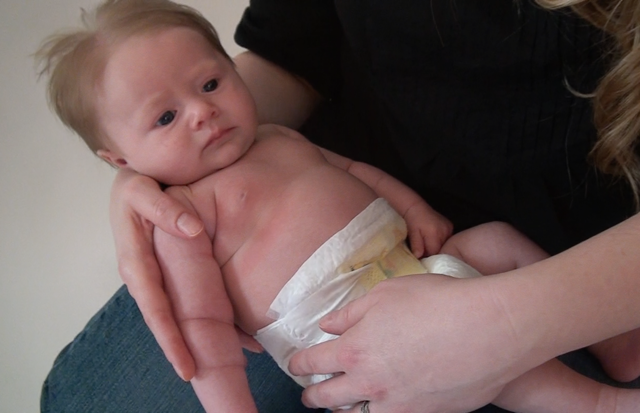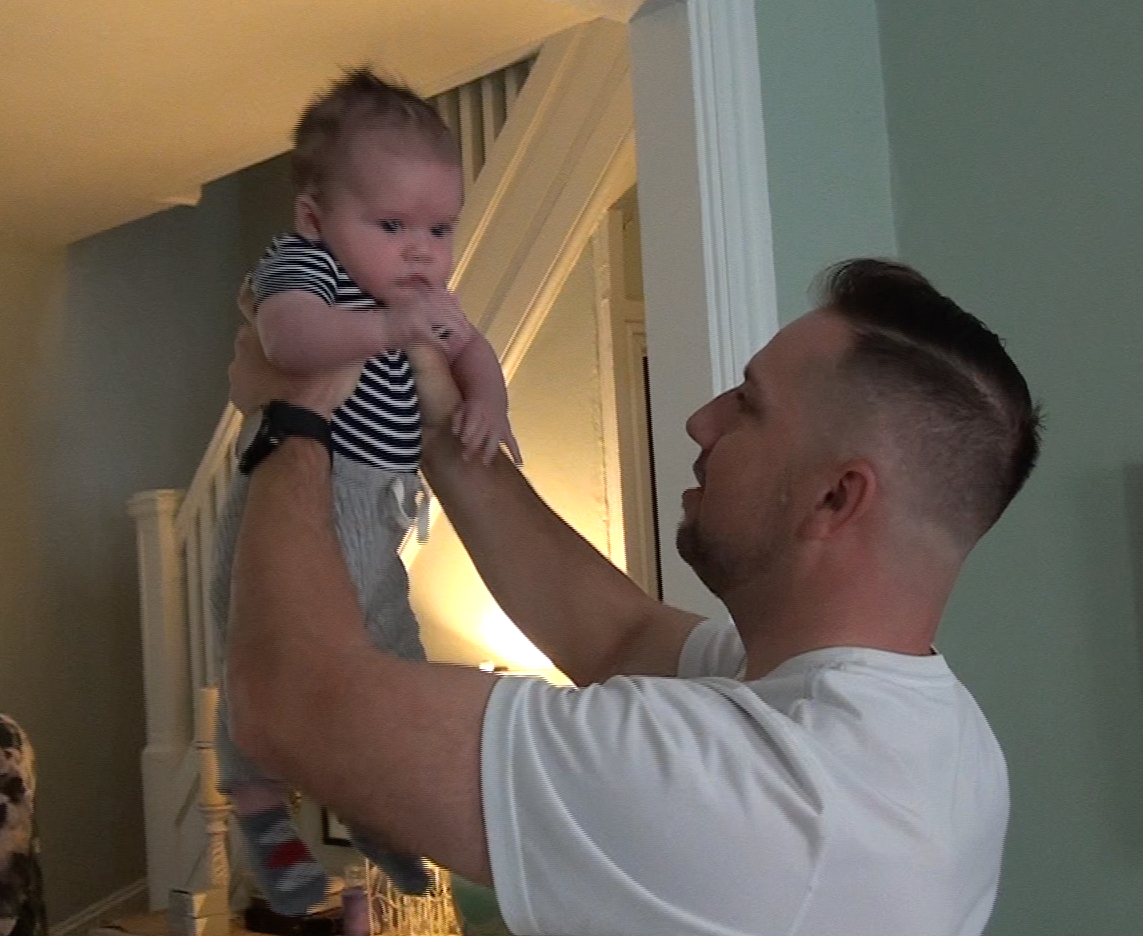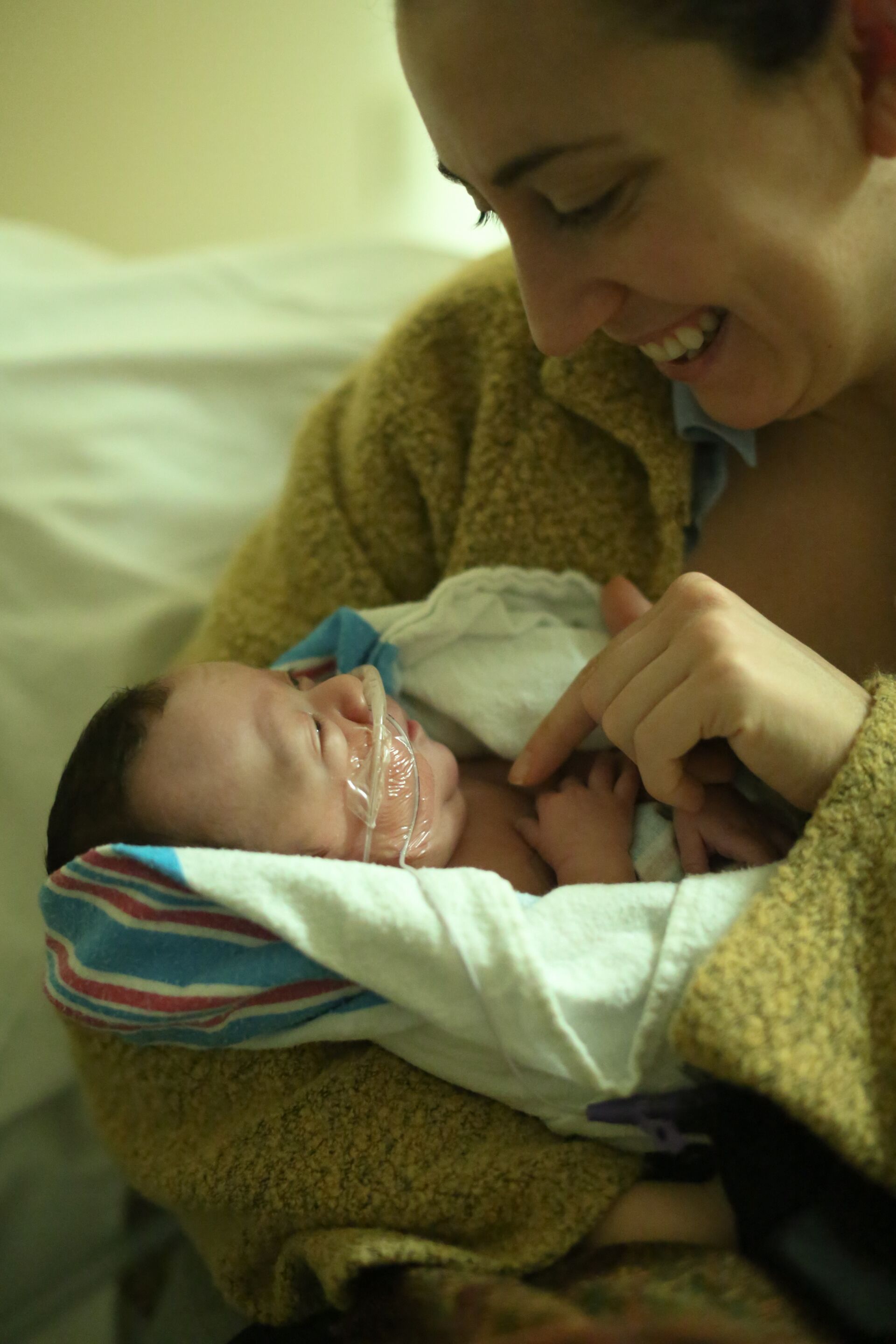STEM Milestones
Newborns (even pre-term infants) are already exploring their world, attempting to make sense of it all.
Key Indicators:
- Turns head toward sounds or voice
- Shows interest in faces- especially mom and dad
- Recognizes mom’s scent
Social/Emotional/Play Milestones
Newborns are making connections and connecting in their own way.
Key Indicators:
- Begins to make eye contact
- Cries differently for different needs (hungry vs. tired)
- Imitates some movements and expressions
- Coos and smiles
Language/Communication Milestones
Studies show that newborn babies recognize parents by scent and voice immediately and actually begin to understand the pause and flow of conversations as early as three weeks
Key Indicators:
- Quiets and sometimes smiles in response to sound or voice
- Recognizes mommy’s voice as early as one day old
- Recognizes daddy’s voice within a week or two
- Begins to understand the pause and flow of conversations by three weeks
Coordination/Movement Milestones
Newborns are able to move their bodies all different ways in response to newborn reflexes. They open and close their hands and bring them to their mouth often.
Key indicators:
- Lifts head and looks around when held upright
- Extends arms and pushes up while holding head up in tummy time
- Turns head left and right
- Moves legs and arms against gravity
- Grasps toys
Sensory Milestones
Newborns are taking in information from their world through all of their senses.
Key indicators:
- Focuses eyes and follows moving object left and right and up and down
- Begins to recognize familiar people
- Can best see 10-12 inches from face
- Can best see shades of grey, dark and light contrasting colors, and after a few weeks old, can process the color red
- Begins to use hands and eyes in coordination
- Prefers sweet smells and tastes
- Prefers soft textures against her skin
- Has over 40,000 tastebuds, so a very acute sense of taste
- Attempts to reach for toys within line of vision
- Calms and self-regulates with rocking, touch, and calming sounds
- Enjoys mommy and daddy’s voice
- Enjoys music and singing and being read to
- Enjoys a variety of movements
Cognitive Milestones
Newborn babies are already tuning in. It is time to talk, read and sing to your baby as much as possible!
Key indicators:
- Turns head toward sounds or voice
- Focuses longer on novel and unfamiliar objects
- Shows familiarity to parent’s voices
- Shows familiarity to mother’s scent
What Would a Pediatric Occupational Therapist Look For?
Pediatric Occupational Therapists will look for certain developmental milestones when reviewing children’s behavior.
Key Indicators:
- Symmetry of all newborn reflexes (both sides of the body should react the same)
- Palmar grasp should start to go away around 3-6 months, giving way to purposeful release
- Head should turn equally to left and right to prevent torticollis (stiffness in neck) and plagiocephaly (flat spots on head)
- Is baby getting enough tummy time?
Time to Check with Baby’s Healthcare Provider
Mommy and daddy, be vigilant! You are your child’s advocate. If you see any of the following in your baby’s second or third month, it is time to notify your baby’s healthcare provider so your baby gets the proper attention.
- Sucks poorly and feeds slowly
- Doesn’t blink when shown a bright light
- Doesn’t focus and follow a nearby object moving side to side
- Rarely moves arms and legs; seems stiff
- Seems excessively loose in the limbs, or floppy
- Lower jaw trembles constantly, even when not crying or excited
- Doesn’t respond to loud sounds
Self-care Milestones for Mommy and Daddy
Just as babies have milestones, new parents need to reach important milestones to stay healthy and happy and have the ability to care for your baby!
- Use proper positioning for breast-feeding (remember, bring baby to you)
- Use proper lifting technique to protect your back
- Nap when your baby naps
- Drink plenty of water
- Eat a balanced diet
- When help is offered, take it!
- Get some fresh air (take a walk with your baby when possible)
- Take time to connect with your partner
References:
The American Academy of Pediatrics, Pathways, The American Occupational Therapy Association











